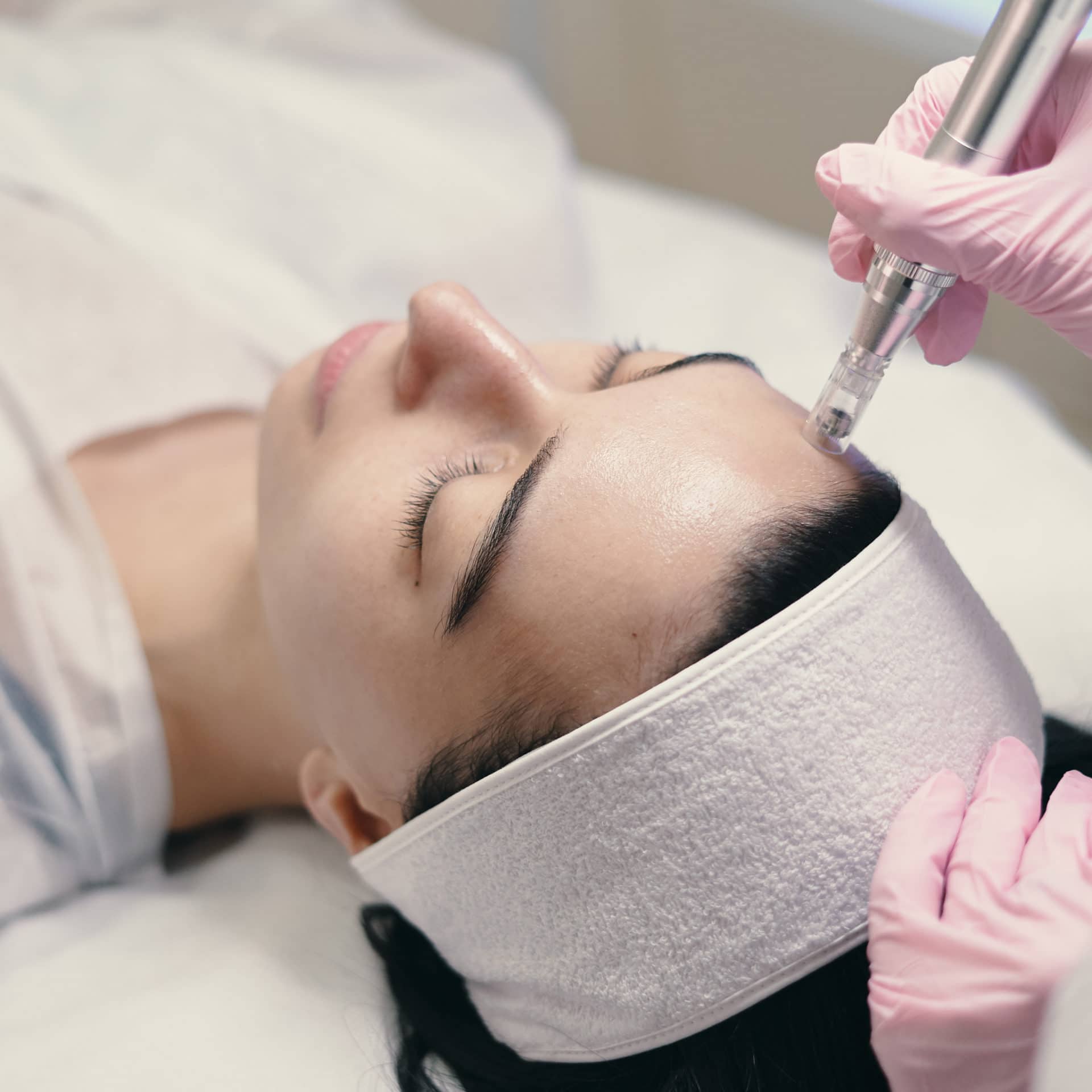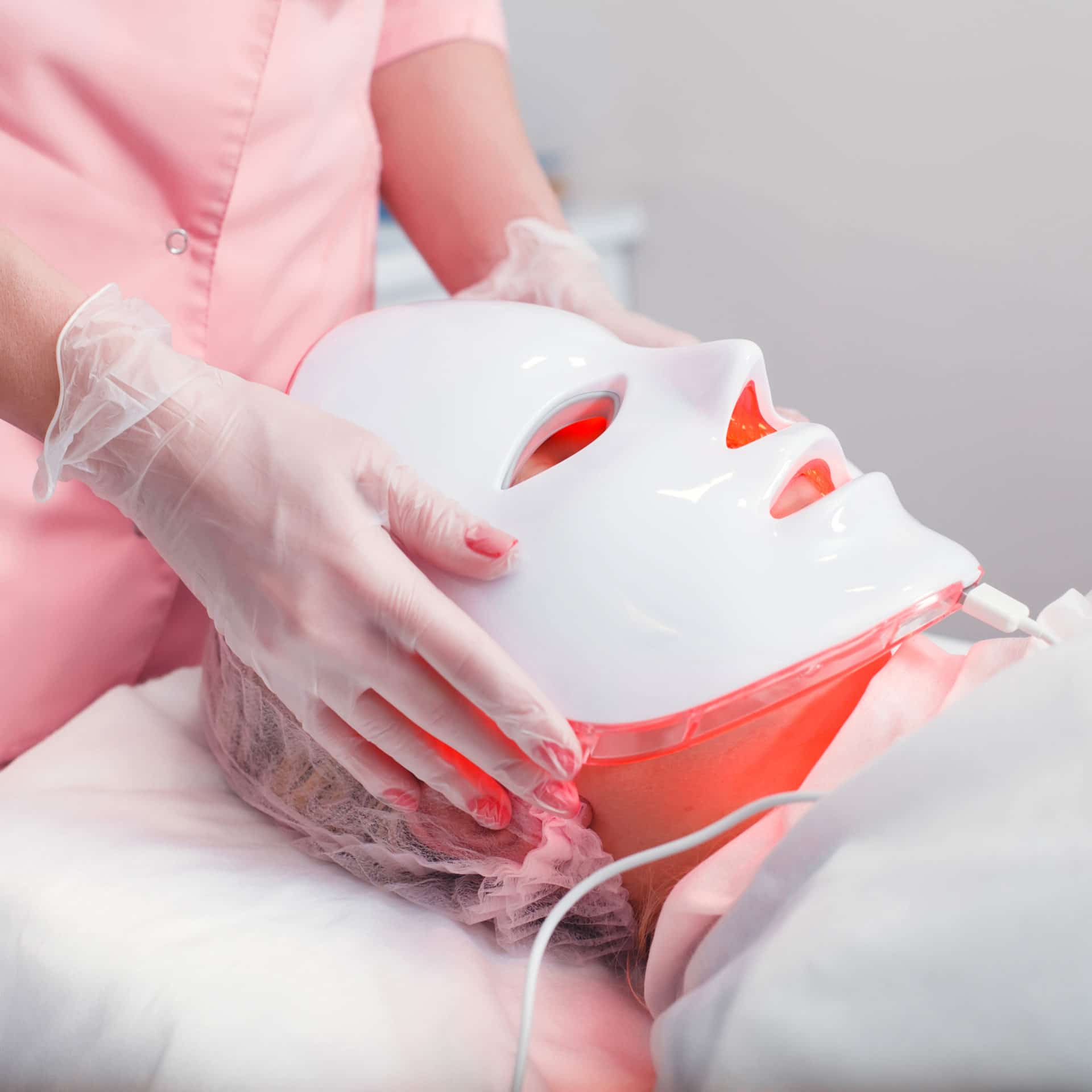Cellulite Reduction
I have cellulite. So what?
Kim Kardashian
Characterized by an orange peel skin aspect visible to the naked eye, cellulite is not a disease, but an aesthetic disgrace. It appears most often on the buttocks or the thighs, but also sometimes on the arms or the belly. Cellulite is a woman’s pet peeve. As it resists to diets, it concerns thin women as well as curvy ones. It consists of a superficial layer of fat located under the skin.
To the fat cell’s increase in volume (adipocytes) are added water retention (bad blood and lymphatic circulation) and fibrosis (modification of the collagen fibres). Thus, according to the predominant phenomenon, three types of cellulite are distinguished: adipose (the excessive storage of fat is dominant), fibrous (a collagen dysfunction is dominant), with water retention (a bad circulation is dominant).
About this treatmentIn summary
-
We need to look at the cellulite to be able to provide the right treatment.
-
Few sessions are necessary to see a result, with a minimum of 10 sessions.
-
additional information will be provided to enhance the outcome of the treatment.
-
Maintenance is necessary with two sessions per year (depending on each patients).
Frequently Asked Questions
WHAT CELLULITE IS AND WHAT IT ISN’T?
What most of us know as cellulite is actually its outward symptom: dimpled, orange-peel skin. But contrary to the popular belief that it’s just a particularly unattractive skin condition, cellulite is a disease of the connective tissues.
The puckered external look of cellulite is just the tip of the iceberg. The deterioration of the skin’s appearance coincides with the more serious alteration of the body’s underlying connective tissue and the microcirculation impairment and enlargement of fat cells that occurs when fat and toxins become trapped within. Although cellulite IS a form of fat, its causes and cures have little to do with diet, exercise or lifestyle. It can result from a complex combination of factors ranging from hormones to heredity.
WHO GETS IT?
It is estimated that 95% of women over 20 will develop some degree of cellulite. And that includes naturally thin women, ultra-slender super-models, women devoted to a healthy lifestyle and diet, and toned athletes. In women, fat occurs in large vertical bundles or chambers, but in men it is arranged as small, diagonal units. In addition, women have a deep reserve layer of fat in certain areas of the body that men do not.
Men usually do not develop cellulite because the organization of their body fat is different. In females, septum is perpendicular to the surface of the skin, as components of the vertical pockets. In males, the septa intersect, forming smaller, polygonal-shaped chambers. This shape distinction, combined with the thicker dermis of the male, makes the skin more resistant to fat storage and less influenced by structural changes (deformed fat cells).
WHEN IS CELLULITE MOST LIKELY TO DEVELOP?
Cellulite often develops at times of hormonal change, including adolescence and during pregnancy. Ageing may heighten its appearance, as the skin tends to thin.
WHAT ARE THE MOST COMMON TYPES OF CELLULITE?
Compact cellulite is characterized by a hardening or “fibrosis” of the connective tissue, often due to poor lymphatic circulation and is typically found in older women. This is probably the hardest kind of cellulite to get rid of because it has accumulated deep in the tissues over a long period of time. Compact cellulite can be sensitive or even painful to the touch.
Watery or spongey cellulite contains more fluid than fat and is often linked to heredity. Women who are thin on top can have watery cellulite, causing a misshapen appearance in the thighs.
Localised cellulite is more superficial than other types. “Saddlebags” are a classic example of localised cellulite, which is often found in otherwise slender women. Women frequently try to diet or “exercise” this kind of cellulite away, with a frustrating lack of success.
Spread cellulite is found all over the thighs and buttocks, also in very thin women. It is never “spongey,” meaning that it contains more fat than fluid.
We now have access to new, sophisticated tools and testing methods that can accurately “type” cellulite so that the most effective treatment can be prescribed. We recommend that all women consult us before considering or undergoing any kind of treatment for cellulite. “Not only is it important in determining the right approach for the individual, but also for identifying underlying medical causes for the problem”.
WHAT DOESN’T WORK?
The never-ending quest to end cellulite has produced more curiosities than cures, from lotions, potions, pills and supplements to the latest anti-cellulite shoes and blue jeans. Cellulite, although thought of as fat, cannot be addressed by weight-reducing methods (diet and exercise) alone. While exercise — part of any healthy lifestyle — tones muscles, burns calories, and increases blood flow, it does not target cellulite specifically. A sensible diet that is low in fat and rich in antioxidants and adequate water intake may help prevent the formation of cellulite, but cannot reduce it once formed. Liposuction can improve the contour of the body by removing fat cells, but it does not address the underlying cause, the connective tissue, and therefore cannot permanently reduce or remove cellulite.
WHAT WORKS?
“Truly combating cellulite must be done at its source, on a cellular level.” Precisely targeting the surface layer of trapped fat, Endermologie® devices safely and effectively revitalise lymphatic and venous exchanges, reconditioning skin’s epidermis, dermis and hypodermis (layers that contain collagen, elastin and keratin).
Using use the combined energy of intensive, tri-dimensional skin tissue mobilisation and aspiration, the technique powerfully, yet gently penetrates the connective tissue, smoothing and beautifying shapely curves while exercising skin to smooth and reshape for a lasting, beautiful whole body transformation and youthful, radiant skin.
Launched in the United States in 1996, Endermologie® astounded the FDA with irrefutable, scientifically validated proof of efficacy. Endermologie® technology was given the landmark approval to make the first claims for cellulite reduction and body contouring.
Although other, minimally invasive and painful predicate devices have begun to piggyback on LPG’s FDA claims, Endermologie® has remained the gold standard of care in the medical and paramedical world. Twenty years of scientific evidence, combined with unequivocal results for a lasting reduction of cellulite (without surgery or recovery time) has ensured that it will remain the industry flagship for years to come.
Regardless of age, gender or ethnicity, Endermologie® is the only real, scientifically proven solution for cellulite. The results speak for themselves-with continued care, they last.
Our prices
Before / After treatment
To see our fantastic results, have a look at our before and after gallery.
Discover our galleryFeel your best, the French Touch will enhance your natural beauty!
Learn more about Dr Philippe Hamida-Pisal
RELATED TREATMENTS

Facial Rejuvenation
Mesotherapy is a safe, natural alternative to invasive cosmetic procedures.

LED Therapy
LED light beautiful skin requires commitment, not miracle.
Erno Lazlo

Massage
PHP Aesthetic-Wellness massages involve highly precise movements carried our by expert hands.